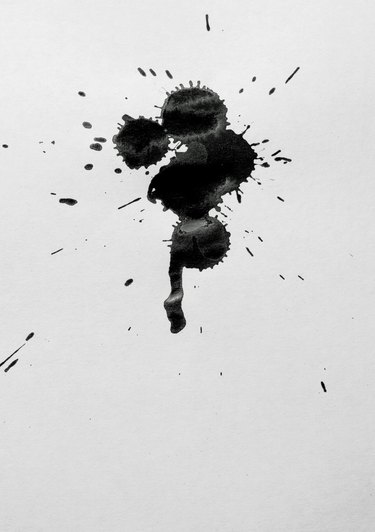Things You'll Need
Newspapers
Canvas or painting surface
Tape or staples
Paints (acrylic or oil)
Water or linseed oil and turpentine
Cups (plastic or ceramic)
Paintbrushes

Jackson Pollock revolutionized the world of art when he came up with the action painting technique. The technique involved dripping and splashing colors on canvas, creating paintings of an expression of the unconscious mood of the artist. You don't require advanced painting skills to master the dripping technique. It takes a good sense of composition to create a modern painting. You can incorporate drip effects in your abstract paintings or create a painting using solely drip effects.
Step 1
Prepare your working space. Place your canvas or painting surface on the floor. Put some old newspapers under and around your canvas to protect the floor. If working on paper, tape or staple the paper to the floor so it won't move while you paint.
Video of the Day
Step 2
Prepare your colors, which have to be liquid. Use a separate cup for each color you intend to use. If using acrylic colors, mix color with water in a cup. Use equal amounts of color and water so the color will have the consistency of yogurt. If you use more water, the color may be transparent. If working with oil paints, mix equal amounts of linseed oil and turpentine and use this solution to make the paint more liquid. Place your cups with color close to your canvas so you have easy access.
Step 3
Dip a wide flat paintbrush in a cup of color and splatter the paint on your canvas. Perform circular, vertical or horizontal movements with your hand while dripping the paint on your canvas.
Step 4
Clean your brush or use another one to splatter another color on your canvas. Use several contrasting colors. Don't concentrate on a single area on your canvas, but move around it and be spontaneous.
Step 5
Analyze your painting by looking at it from different angles around your canvas. See if the composition is balanced and whether it needs any additional elements or colors. If the canvas is large, climb on a chair and look at it or take a picture and analyze your painting on your computer screen. Add dots, swirls and lines of solid color using a paintbrush to balance your composition, if necessary.
Step 6
Allow your piece to dry before you move it. Test if the paints are dry by touching an edge of your work. If the color sticks to your fingers, the painting requires additional drying time. Acrylic paints may dry within a few hours, but oil paints require several days to dry, depending on the thickness of the colors you use.
Tip
For impasto effects, use undiluted paint. However, this will take longer to dry. Instead of paintbrushes, use pipe cleaners. Dip the pipe cleaners into the color you want to use and place it over your canvas. Tap it and the paint should splatter on your canvas.
Use a roller to cover your canvas in a background color, allow to dry and drip the paint on top of this color. If using only the dripping technique, you may not cover all areas of your canvas and the background will be visible.
Video of the Day